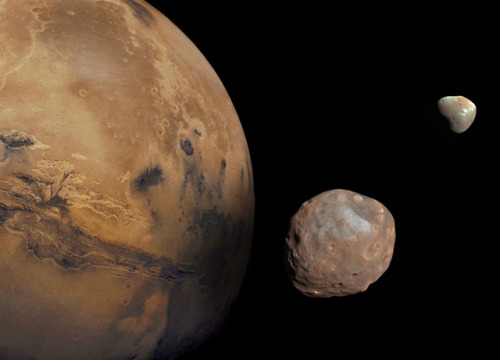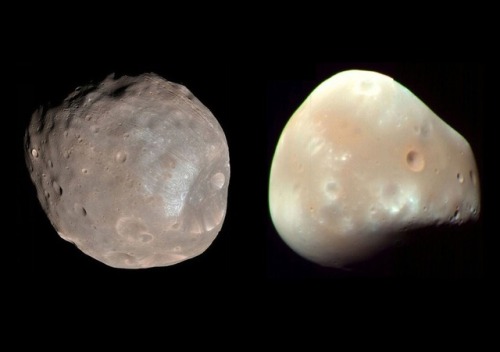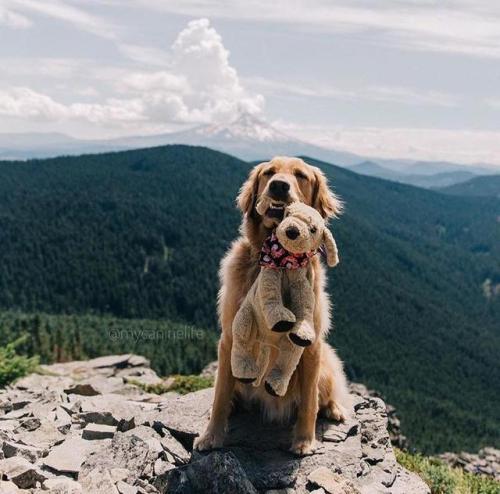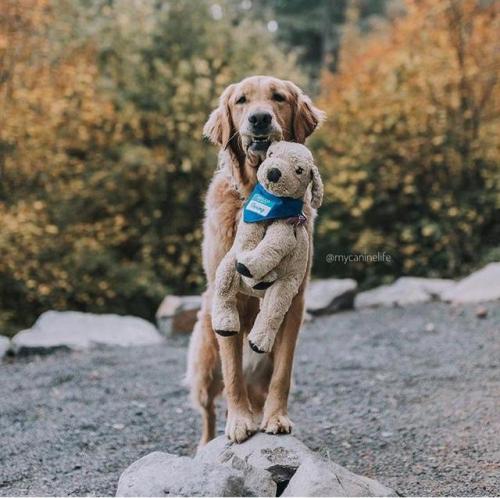Ocrim1967 - Senza Titolo

More Posts from Ocrim1967 and Others










General Relativity Rules: Einstein Victorious In Unprecedented Gravitational Redshift Test
“The most interesting part of this result is that it clearly demonstrates the purely General Relativistic effect of gravitational redshift. The observations of S0-2 showcase an exact agreement with Einstein’s predictions, within the measurement uncertainties. When Einstein first conceived of General Relativity, he did so conceptually: with the idea that acceleration and gravitation were indistinguishable to an observer.
With the validation of Einstein’s predictions for the orbit of this star around the galactic center’s black hole, scientists have affirmed the equivalence principle, thereby ruling out or constraining alternative theories of gravity that violate this cornerstone of Einsteinian gravity. Gravitational redshifts have never been measured in environments where gravity is this strong, marking another first and another victory for Einstein. Even in the strongest environment ever probed, the predictions of General Relativity have yet to lead us astray.”
If you want to test Einstein’s General Relativity, you’ll want to look for an effect that it predicts that’s unique, and you’ll want to look for it in the strongest-field regime possible. Well, there’s a black hole at the center of our galaxy with 4 million times the mass of the Sun, and there’s a star (S0-2) that passes closer to it, during closest approach, than any other. In May of 2018, it made this closest approach, coming within 18 billion km (about twice the diameter of Neptune’s orbit) of the black hole, and zipping around at 2.7% the speed of light.
Did Einstein’s predictions for gravitational redshift come out right? You bet they did: 5-sigma, baby! Come get the full, amazing story here!
The Kepler space telescope has shown us our galaxy is teeming with planets — and other surprises

The Kepler space telescope has taught us there are so many planets out there, they outnumber even the stars. Here is a sample of these wondrous, weird and unexpected worlds (and other spectacular objects in space) that Kepler has spotted with its “eye” opened to the heavens.
Kepler has found that double sunsets really do exist.

Yes, Star Wars fans, the double sunset on Tatooine could really exist. Kepler discovered the first known planet around a double-star system, though Kepler-16b is probably a gas giant without a solid surface.
Kepler has gotten us closer to finding planets like Earth.

Nope. Kepler hasn’t found Earth 2.0, and that wasn’t the job it set out to do. But in its survey of hundreds of thousands of stars, Kepler found planets near in size to Earth orbiting at a distance where liquid water could pool on the surface. One of them, Kepler-62f, is about 40 percent bigger than Earth and is likely rocky. Is there life on any of them? We still have a lot more to learn.
This sizzling world is so hot iron would melt!

One of Kepler’s early discoveries was the small, scorched world of Kepler-10b. With a year that lasts less than an Earth day and density high enough to imply it’s probably made of iron and rock, this “lava world” gave us the first solid evidence of a rocky planet outside our solar system.
If it’s not an alien megastructure, what is this oddly fluctuating star?

When Kepler detected the oddly fluctuating light from “Tabby’s Star,” the internet lit up with speculation of an alien megastructure. Astronomers have concluded it’s probably an orbiting dust cloud.
Kepler caught this dead star cannibalizing its planet.

What happens when a solar system dies? Kepler discovered a white dwarf, the compact corpse of a star in the process of vaporizing a planet.
These Kepler planets are more than twice the age of our Sun!

The five small planets in Kepler-444 were born 11 billion years ago when our galaxy was in its youth. Imagine what these ancient planets look like after all that time?
Kepler found a supernova exploding at breakneck speed.

This premier planet hunter has also been watching stars explode. Kepler recorded a sped-up version of a supernova called a “fast-evolving luminescent transit” that reached its peak brightness at breakneck speed. It was caused by a star spewing out a dense shell of gas that lit up when hit with the shockwave from the blast.
* All images are artist illustrations.
Make sure to follow us on Tumblr for your regular dose of space: http://nasa.tumblr.com
Far from Westeros, a Three-Eyed Raven Helps NASA Find Its Way
Perched on the outside of the International Space Station is Raven—a technology-filled module that helps NASA develop a relative navigation capability, which is essentially autopilot for spacecraft. Raven has been testing technologies to enable autonomous rendezvous in space, which means the ability to approach things in space without human involvement, even from the ground.

Developed by the Satellite Servicing Projects Division (SSPD), our three-eyed Raven has visible, infrared, and Lidar sensors and uses those “eyes” to image and track visiting spacecraft as they come and go from the space station. Although Raven is all-seeing, it only sees all in black and white. Color images do not offer an advantage in the case of Raven and Restore-L, which also utilize infrared and Lidar sensors.
The data from Raven’s sensors is sent to its processor, which autonomously sends commands that swivel Raven on its gimbal, or pointing system. When Raven turns using this system, it is able to track a vehicle. While these maneuvers take place, NASA operators evaluate the movements and make adjustments to perfect the relative navigation system technologies.

A few days ago, Raven completed its 21st observation of a spacecraft when it captured images of Northrop Grumman’s Cygnus vehicle delivering science investigations and supplies as part of its 11th commercial resupply services mission, including another SSPD payload called the Robotic External Leak Locator.

And just last month, Raven celebrated its two-year anniversary in space, marking the occasion with an observation of SpaceX’s Crew Dragon during the Demo-1 mission.

What is this—a spacecraft for ants??
While this shot of Dragon isn’t terribly impressive because of where the spacecraft docked on station, Raven has captured some truly great images when given the right viewing conditions.
From SpaceX Dragon resupply mission observations…

…to Cygnus supply vehicles.

Raven has observed six unique types of spacecraft.
It has also conducted a few observations not involving spacecraft, including the time it captured Hurricane Irma…

…or the time it captured station’s Dextre arm removing the Robotic Refueling Mission 3 payload, another mission developed by SSPD, from the Dragon spacecraft that delivered it to the orbiting laboratory.


Thus far, Raven has had a great, productive life aboard the station, but its work isn’t done yet! Whether it’s for Restore-L, which will robotically refuel a satellite, or getting humans to the Moon or Mars, the technologies Raven is demonstrating for a relative navigation system will support future NASA missions for decades to come.

Make sure to follow us on Tumblr for your regular dose of space: http://nasa.tumblr.com









ESO’s La Silla Observatory over the night sky
Image credit: ESO



In 40 million years, Mars may have a ring (and one fewer moon)
Nothing lasts forever - especially Phobos, one of the two small moons orbiting Mars. The moonlet is spiraling closer and closer to the Red Planet on its way toward an inevitable collision with its host. But a new study suggests that pieces of Phobos will get a second life as a ring around the rocky planet.
A moon - or moonlet - in orbit around a planet has three possible destinies. If it is just the right distance from its host, it will stay in orbit indefinitely. If it’s beyond that point of equilibrium, it will slowly drift away. (This is the situation with the moon; as it gradually pulls away from Earth, its orbit is growing by about 1.5 inches per year.) And if a moon starts out on the too-close side, its orbit will keep shrinking until there is no distance left between it and its host planet. The Martian ring will last for at least 1 million years - and perhaps for as long as 100 million years, according to the study.
The rest of Phobos will probably remain intact, until it hits the Martian surface. But it won’t be a direct impact; instead, the moonlet’s remains will strike at an oblique angle, skipping along the surface like a smooth stone on a calm lake.
This has probably happened before - scientists believe a group of elliptical craters on the Martian surface were caused by a small moon that skidded to its demise. (If this were to happen on Earth, our planet’s greater mass would produce a crash as big as the one that wiped out the dinosaurs, the researchers noted as an aside.)
source
images: NASA/JPL, Tushar Mittal using Celestia 2001-2010, Celestia Development Team.










Yes, The Apollo Moon Landings Really Did Happen
“2.) We have extensive photographic and video evidence from the Apollo missions themselves. How could the lunar module have ascended back off of the surface and returned the astronauts back to the orbiting module which would take them back to Earth? Exactly like the video above shows, from direct Apollo 17 footage. The hypergolic propellant system isn’t based off of a single explosion, but rather a constant thrust of ~16,000 Newtons that was steadily delivered over a timespan of about 5 minutes. There’s no exhaust trail because there’s no lunar atmosphere, but you can track the spacecraft’s accelerated motion for yourself with even basic modern software.”
We’re less than a month away from the official 50th anniversary of the first crewed Moon landing, and there are all sorts of good reasons to celebrate. But for most of us alive today, the final Apollo mission occurred before we were born. Perhaps because of this distance between then and now, there are a great many people who don’t believe that the lunar landings ever occurred. While you might (rightfully) dismiss this position as an uninformed conspiracy, you can also immediately point to a slew of scientific evidence to demonstrate that yes, we did go to the Moon, and here is an enormous suite of data to back that up. From thousands of photographs to suites of instruments and scientific data to an examination of the landing sites today, everything lines up.
Come get the evidence for yourself, and don’t let someone’s conspiracy-minded ravings lead you astray.
Your Gut in Space
Finding the Right Balance for the Microbiota
Trillions of microorganisms live on and in the human body, many of them essential to its function and health. These organisms, collectively known as the microbiota, outnumber cells in the body by at least five times.

Microorganisms in the intestinal tract, the gut microbiota, play an especially important role in human health. An investigation on the International Space Station, Rodent Research-7 (RR-7), studies how the gut microbiota changes in response to spaceflight, and how that change in turn affects the immune system, metabolic system, and circadian or daily rhythms.

Research shows that the microbiota in the mammalian digestive tract has a major impact on an individual’s physiology and behavior. In humans, disruption of microbial communities has been linked to multiple health problems affecting intestinal, immune, mental and metabolic systems.

The investigation compares two different genetic strains of mice and two different durations of spaceflight. Twenty mice, ten of each strain, launch to the space station, and another 20 remain on the ground in identical conditions (except, of course, for the absence of gravity). Mice are a model organism that often serves as a scientific stand-in for other mammals and humans.

Fecal material collected from the mice every two weeks will be examined for changes in the gut microbiota. Researchers plan to analyze fecal and tissue samples after 30 and 90 days of flight to compare the effects of different durations of time in space.

With a better understanding of relationships between changes such as disruption in sleep and an imbalance of microbial populations, researchers can identify specific factors that contribute to changes in the microbiota. Further studies then can determine proactive measures and countermeasures to protect astronaut health during long-term missions.

Make sure to follow us on Tumblr for your regular dose of space: http://nasa.tumblr.com.
6 Ways NASA Technology Makes You Healthier
An important part of our mission is keeping astronauts strong and healthy during stays in space, but did you know that our technology also helps keep you healthy? And the origins of these space innovations aren’t always what you’d expect.
As we release the latest edition of NASA Spinoff, our yearly publication that celebrates all the ways NASA technology benefits us here on Earth, let’s look at some ways NASA is improving wellness for astronauts—and everyone else.
1. Weightless weight-lifting

Without gravity to work against, astronauts lose bone and muscle mass in space. To fight it, they work out regularly. But to get them a good burn, we had to get creative. After all, pumping iron doesn’t do much good when the weights float.
The solution? Elastic resistance. Inventor Paul Francis was already working on a portable home gym that relied on spiral-shaped springs made of an elastic material. He thought the same idea would work on the space station and after additional development and extensive testing, we agreed.
Our Interim Resistive Exercise Device launched in 2000 to help keep astronauts fit. And Francis’ original plan took off too. The technology perfected for NASA is at the heart of the Bowflex Revolution as well as a new line of handheld devices called OYO DoubleFlex, both of which enable an intensive—and extensive—workout, right at home.
2. Polymer coating keeps hearts beating

A key ingredient in a lifesaving treatment for many patients with congestive heart failure is made from a material a NASA researcher stumbled upon while working on a supersonic jet in the 1990s.
Today, a special kind of pacemaker that helps synchronize the left and right sides of the heart utilizes the unique substance known as LaRC-SI. The strong material can be cast extremely thin, which makes it easier to insert in the tightly twisted veins of the heart, and because it insulates so well, the pacemaker’s electric pulses go exactly where they should.
Since it was approved by the FDA in 2009, the device has been implanted hundreds of thousands of times.
3. Sutures strong enough for interplanetary transport

Many people mistakenly think we created Teflon. Not true: DuPont invented the unique polymer in 1938. But an innovative new way to use the material was developed to help us transport samples back from Mars and now aids in stitching up surgery patients.
Our scientists would love to get pristine Martian samples into our labs for more advanced testing. One complicating factor? The red dust makes it hard to get a clean seal on the sample container. That means the sample could get contaminated on its way back to Earth.
The team building the cannister had an idea, but they needed a material with very specific properties to make it work. They decided to use Polytetrafluoroethylene (that’s the scientific name for Teflon), which works really well in space.
The material we commonly recognize as Teflon starts as a powder, and to transform it into a nonstick coating, the powder gets processed a certain way. But process it differently, and you can get all kinds of different results.
For our Mars sample return cannister prototype, the powder was compressed at high pressures into a block, which was then forced through an extruder. (Imagine pressing playdough through a mold). It had never been done before, but the end result was durable, flexible and extremely thin: exactly what we needed.
And since the material can be implanted safely in the human body—it was also perfect as super strong sutures for after surgery.
4. Plant pots that clean the air

It may surprise you, but the most polluted air you breathe is likely the air inside your home and office. That’s especially true these days with energy-efficient insulation: the hot air gets sealed in, but so do any toxins coming off the paint, furniture, cooking gas, etc.
This was a problem NASA began worrying about decades ago, when we started planning for long duration space missions. After all, there’s no environment more insulated than a spaceship flying through the vacuum of space.
On Earth, plants are a big part of the “life support” system cleaning our air, so we wondered if they could do the same indoors or in space.
The results from extensive research surprised us: we learned the most important air scrubbing happens not through a plant’s leaves, but around its roots. And now you can get the cleanest air out of your houseplants by using a special plant pot, available online, developed with that finding in mind: it maximizes air flow through the soil, multiplying the plant’s ability to clean your air.
5. Gas sensor detects pollution from overhead

Although this next innovation wasn’t created with pollution in mind, it’s now helping keep an eye on one of the biggest greenhouse gasses: methane.
We created this tiny methane “sniffer” to help us look for signs of life on Mars. On Earth, the biggest source of methane is actually bacteria, so when one of our telescopes on the ground caught a glimpse of the gas on Mars, we knew we needed to take a closer look.
We sent this new, extremely sensitive sensor on the Curiosity Rover, but we knew it could also be put to good use here on our home planet. We adapted it, and today it gets mounted on drones and cars to quickly and accurately detect gas leaks and methane emissions from pipelines, oil wells and more.
The sensor can also be used to better study emissions from swamps and other natural sources, to better understand and perhaps mitigate their effects on climate change.
6. DNA “paint” highlights cellular damage

There’s been a lot of news lately about DNA editing: can genes be changed safely to make people healthier? Should they be?
As scientists and ethicists tackle these big questions, they need to be sure they know exactly what’s changing in the genome when they use the editing tools that already exist.
Well, thanks to a tool NASA helped create, we can actually highlight any abnormalities in the genetic code with special fluorescent “paint.”
But that’s not all the “paint” can do. We actually created it to better understand any genetic damage our astronauts incurred during their time in space, where radiation levels are far higher than on Earth. Down here, it could help do the same. For example, it can help doctors select the right cancer treatment by identifying the exact mutation in cancer cells.
You can learn more about all these innovations, and dozens more, in the 2019 edition of NASA Spinoff. Read it online or request a limited quantity print copy and we’ll mail it to you!




Couple goals









(Source)
-
 crabpaste420 liked this · 1 month ago
crabpaste420 liked this · 1 month ago -
 rewordthis reblogged this · 1 month ago
rewordthis reblogged this · 1 month ago -
 sf-997 reblogged this · 2 months ago
sf-997 reblogged this · 2 months ago -
 new-life-melbourne reblogged this · 2 months ago
new-life-melbourne reblogged this · 2 months ago -
 cutedrugss liked this · 3 months ago
cutedrugss liked this · 3 months ago -
 verdrehtewahrheit reblogged this · 3 months ago
verdrehtewahrheit reblogged this · 3 months ago -
 herkulesstrahlen reblogged this · 3 months ago
herkulesstrahlen reblogged this · 3 months ago -
 ravenlyran reblogged this · 4 months ago
ravenlyran reblogged this · 4 months ago -
 ravenlyran liked this · 4 months ago
ravenlyran liked this · 4 months ago -
 exaltat-ion reblogged this · 4 months ago
exaltat-ion reblogged this · 4 months ago -
 catts-tatts reblogged this · 4 months ago
catts-tatts reblogged this · 4 months ago -
 blinknerd liked this · 4 months ago
blinknerd liked this · 4 months ago -
 estrogenblast liked this · 4 months ago
estrogenblast liked this · 4 months ago -
 borzoiboogers reblogged this · 4 months ago
borzoiboogers reblogged this · 4 months ago -
 palmsandsunshine liked this · 5 months ago
palmsandsunshine liked this · 5 months ago -
 deficientslinky liked this · 5 months ago
deficientslinky liked this · 5 months ago -
 lazy-queer reblogged this · 5 months ago
lazy-queer reblogged this · 5 months ago -
 plavibandit liked this · 5 months ago
plavibandit liked this · 5 months ago -
 thong-it liked this · 5 months ago
thong-it liked this · 5 months ago -
 nonambidextrous reblogged this · 5 months ago
nonambidextrous reblogged this · 5 months ago -
 pantsareanillusion reblogged this · 5 months ago
pantsareanillusion reblogged this · 5 months ago -
 xena-wolfgang reblogged this · 5 months ago
xena-wolfgang reblogged this · 5 months ago -
 xenaandgabby reblogged this · 5 months ago
xenaandgabby reblogged this · 5 months ago -
 lowtideandhightea reblogged this · 5 months ago
lowtideandhightea reblogged this · 5 months ago -
 marionettelife reblogged this · 5 months ago
marionettelife reblogged this · 5 months ago -
 marionettelife liked this · 5 months ago
marionettelife liked this · 5 months ago -
 possessedrobot reblogged this · 5 months ago
possessedrobot reblogged this · 5 months ago -
 interdimensionalburnout liked this · 5 months ago
interdimensionalburnout liked this · 5 months ago -
 cemeteryfun reblogged this · 5 months ago
cemeteryfun reblogged this · 5 months ago -
 subjectivemortality liked this · 5 months ago
subjectivemortality liked this · 5 months ago -
 ssunspotted reblogged this · 5 months ago
ssunspotted reblogged this · 5 months ago -
 catts-tatts reblogged this · 5 months ago
catts-tatts reblogged this · 5 months ago -
 nonambidextrous liked this · 5 months ago
nonambidextrous liked this · 5 months ago -
 therebelgalaxy reblogged this · 5 months ago
therebelgalaxy reblogged this · 5 months ago -
 therebelgalaxy liked this · 5 months ago
therebelgalaxy liked this · 5 months ago -
 why-worry-do-it-later reblogged this · 5 months ago
why-worry-do-it-later reblogged this · 5 months ago -
 apinkegg reblogged this · 5 months ago
apinkegg reblogged this · 5 months ago -
 politicsoflove reblogged this · 5 months ago
politicsoflove reblogged this · 5 months ago -
 multi-fandomgirlygirl liked this · 5 months ago
multi-fandomgirlygirl liked this · 5 months ago -
 orions-bow liked this · 5 months ago
orions-bow liked this · 5 months ago -
 borzoiboogers liked this · 5 months ago
borzoiboogers liked this · 5 months ago -
 freeformtarsier reblogged this · 5 months ago
freeformtarsier reblogged this · 5 months ago -
 anamaycrystal liked this · 5 months ago
anamaycrystal liked this · 5 months ago -
 luciferbacon reblogged this · 5 months ago
luciferbacon reblogged this · 5 months ago -
 motherfuckingmotherfucker liked this · 5 months ago
motherfuckingmotherfucker liked this · 5 months ago -
 wormofmouth liked this · 5 months ago
wormofmouth liked this · 5 months ago -
 brighten-the-rainy-day reblogged this · 5 months ago
brighten-the-rainy-day reblogged this · 5 months ago -
 readingfolklore reblogged this · 5 months ago
readingfolklore reblogged this · 5 months ago